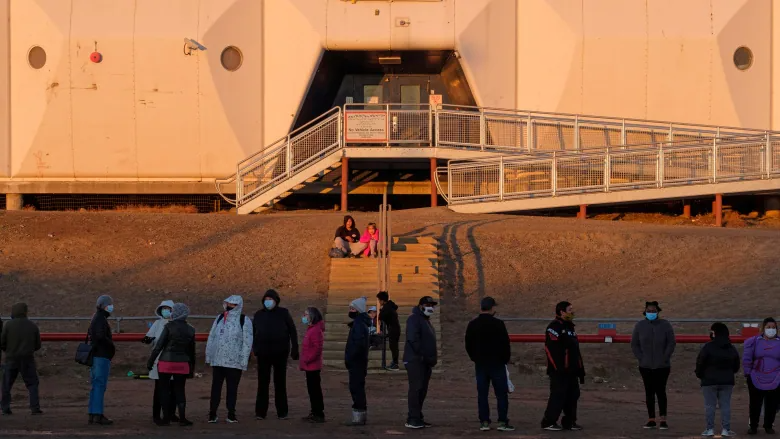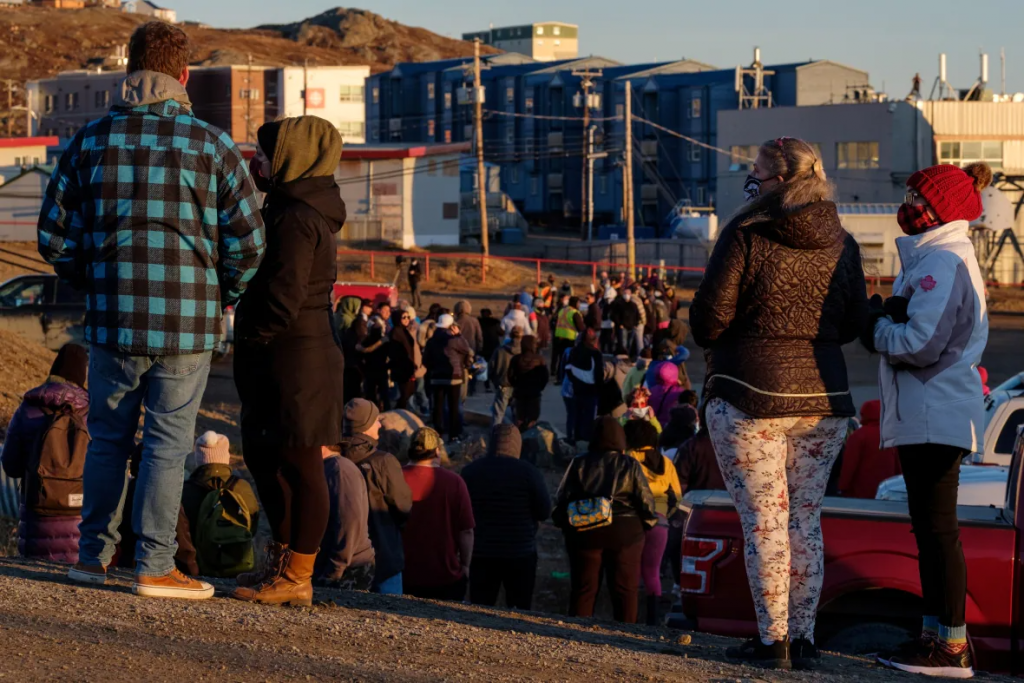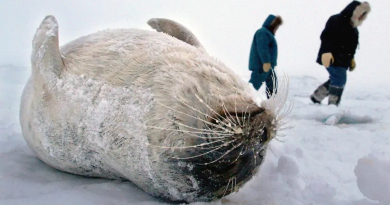City in Arctic Canada says historical fuel spill likely source of drinking water contamination

‘It’s fair to say this is the source,’ says Iqaluit’s chief administrative officer
An Iqaluit city official told CBC News that an underground fuel spill found near the water treatment plant could explain why the city had to declare an emergency due to fuel-contaminated drinking water.
“The team located an underground spill that showed signs of historic fuel adjacent to the water treatment plant in an inaccessible, below-ground void,” Amy Elgersma, Iqaluit’s chief administrative officer, told Mary Tatty, host of CBC’s noon hour program, Nipivut.
The city of nearly 8,000 people, has been in a state of emergency since Oct. 12, when staff confirmed evidence of the fuel contamination. Residents have been told the city’s treated water is unsafe to drink even if it’s filtered and boiled.
“Testing is underway that this is the source of the reported hydrocarbon contamination,” Elgersma said. “But it’s fair to say this is the source.”
Elgersma said the contamination in the North tank likely came from that underground spill, and seems to have entered the North tank “in that way.”
The city has reported the spill to the Nunavut government, she said, and a firm has been hired to manage and remove the spill.
She said it’s hard to say when the spill happened, but that it is a historical spill that is being cleaned up “as we speak, and [is] contained.”
Elgersma estimates the spill will be cleaned up from the site by the end of the week.
Tap water still unsafe to drink
Residents and businesses in the city that receive water through city pipes (i.e. those whose water is not delivered by regularly scheduled trucks) remain under the do not consume order until further notice, Elgersma said.
People can now wash laundry, dishes and their hands with that tap water, but using it to drink or cook is still unsafe, however, she said people can now use tap water for showering and bathing, including those who are pregnant as well as infants and newborns.

According to Elgersma, the affected tank was pumped out and bypassed to separate it from the rest of the treatment process earlier on in the crisis.
She said the water treatment plant “is still able to achieve its chlorine contact time and disinfectant requirements because we have the large potable treated water reservoir.”
“The city has completed the remedial work to remove the hydrocarbons from the water treatment plants as well as any remaining hydrocarbons in the treated reservoir.”
The city’s engineers are working to develop a plan for site remediation, which Elgersma said will happen “later on.”
Flushing of the distribution network is underway and is expected to continue until Thursday.
Testing is also being done throughout the water treatment and distribution system, Elgersma said. Because of the remedial efforts so far, she said it is expected that the results will show “undetectable levels of hydrocarbons, in compliance with health guidelines.”
She said residents who get piped water can expect to see more guidelines in the coming days.
‘Suspended tank’
Elgersma said the city has not yet been able to determine exactly why this contamination occurred in the ground.
However, she said there is a “suspended tank” that has “rusted out and caused this spill adjacent to the water treatment plant.”
She said it was discovered in a void between the water treatment plant and some blasted bedrock underground.
“We don’t quite know … the purpose of that tank, but it is part of our ongoing investigation to look into the historic uses and how it got there and why it’s there.”
Elgersma said it’s possible the historical fuel spill could be from the 1960s.
“That’s just a rough estimate at this point,” she said.
As part of the ongoing investigation, Elgersma said the city is reviewing old information, historic and original drawings from the plant and other work that’s been done in the area. “We’re going to look into what the purpose of this old tank was,” she said.
Military sends water purification units
The city has also installed an online real-time monitoring station, which will monitor the drinking water quality within the treatment plant and can provide early warning notification of hydrocarbons or any changes to the water quality.
The Canadian Armed Forces sent reverse osmosis water purification units to Iqaluit over the weekend, at the request of the Nunavut government.
City workers and residents have been collecting water from the Sylvia Grinnell River, but another solution was needed as the river begins to freeze over, Iqaluit Mayor Kenny Bell told CBC News Network last week.
-With files from Nick Murray, Mary Tatty and Jackie McKay
Related stories from around the North:
United States: Climate change is worsening water scarcity in rural Alaska says study, Eye on the Arctic


